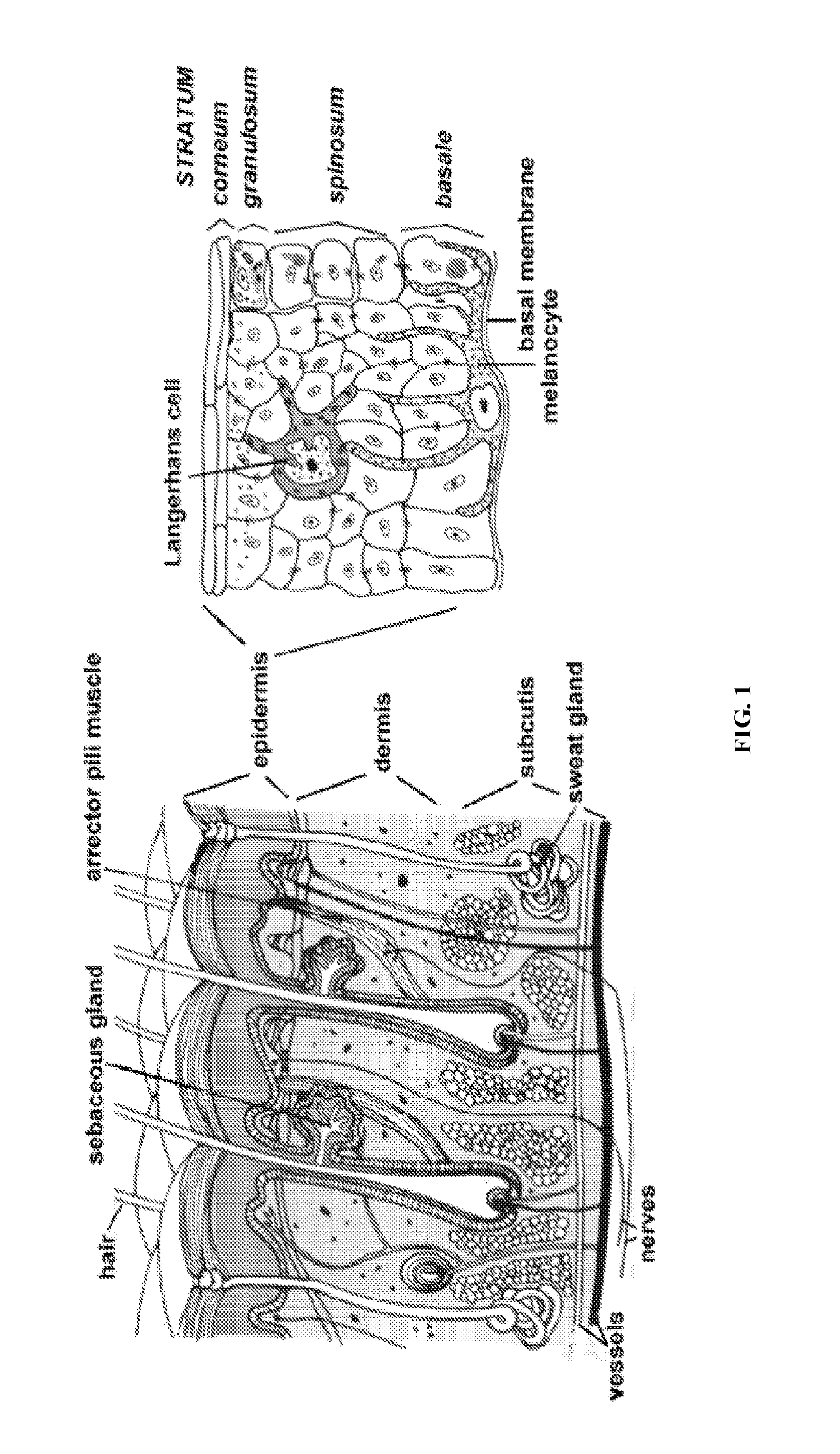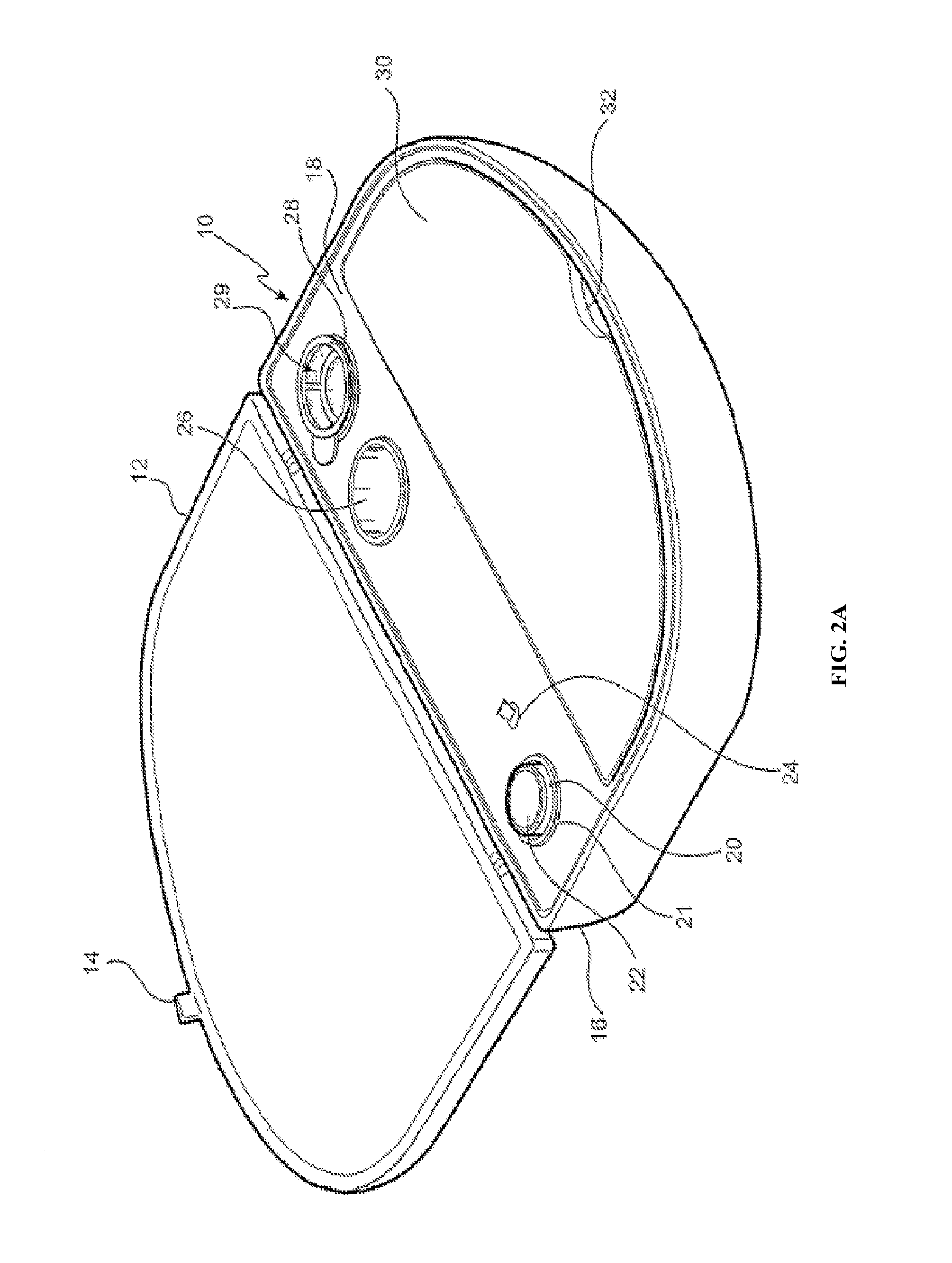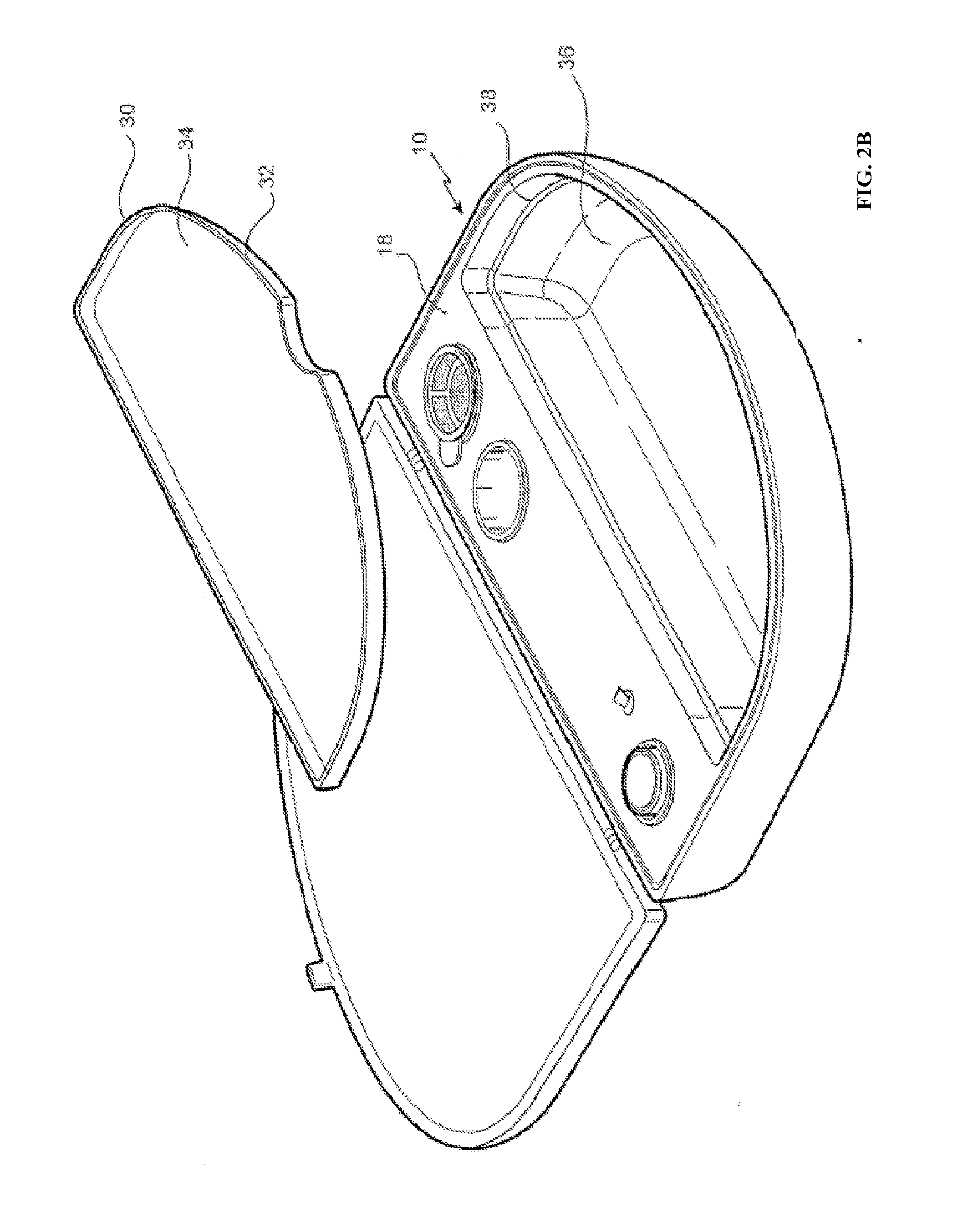Cell Suspension and Use Thereof
a technology of cell suspension and cell suspension, which is applied in the field of cell suspension and use thereof, can solve the problems that the clinicians would otherwise have limited or no access to such autologous epithelial cells, and achieve the effects of preventing clogging of the applicator, and reducing the risk of infection
- Summary
- Abstract
- Description
- Claims
- Application Information
AI Technical Summary
Benefits of technology
Problems solved by technology
Method used
Image
Examples
example 1
Preparation of Recipient Site
[0122]To optimize the success of the epithelium-related procedure, the wound was cleaned and assessed to be of the appropriate depth. Further, blood homeostasis was established and the wound was checked for evidence of surrounding cellulitis or infection. Techniques for preparing the area included, without limitation, sharp dissection, dermabrasion or laser-resurfacing.
Donor Site Biopsy
[0123]The donor site was chosen to appropriately match the recipient site. The donor site was infiltrated with local anesthetic and adrenaline underneath the skin near the subcutaneous tissue. This allowed the donor site to be firm and aided in the taking a biopsy. The dimensions of the biopsy were determined by the size of the surface area of the recipient site to be covered. Typically, the present invention allows for a biopsy size that has an expansion ratio of about 1:10 to 1:80 (donor biopsy size: recipient site size). In one example, a biopsy size of 2 cm×2 cm was ta...
example 2
[0134]The embodiment shown in FIG. 2A is directed to a ReCell® Rapid Technique cell harvesting apparatus 10 for use in producing a transplantable cellular suspension of living tissue suitable for applying to a patient in an epithelium-related procedure.
[0135]As illustrated in FIG. 2A the apparatus includes a closure lid 12 possessing a locking mechanism 14 adapted to releasably engage a base portion 16. The locking mechanism 14 provides a means for closing the apparatus 16 when not in use. Located within the base portion 16 is a first member 18 within which there is provided an aperture 20 in which there is located a vial 22 for the enzyme. Adjacent the aperture there is provided an activation switch 24 capable of activating the heating means (not shown). The first member also provides a fluid containment well 26 and a filter recess 28. As presented in this illustration the filter 29 is shown located in the filter recess. Ordinarily the filter is an optional item included as a separ...
example 3
[0143]It was tested whether HA hydrogels increase the viability and migration of human stratum basale epidermal Keratinocytes from adult donors. Various hydrogels were tested using assays including Transwell Cell Migration, CellTiter 96® Aqueous Cell Proliferation Assay and in vitro Scratch Assay described below.
Protocol for Transwell Cell Migration
[0144]1. Maintain stock cultures of Primary Epidermal Keratinocytes (PEK), Normal, Human, Adult cells in Dermal Cell Basal Medium supplemented with Keratinocyte Growth Kit and Gentamicin-Amphotericin B Solution (Complete Media). Subculture the stock cultures of cells to 2.5×104 cells / ml (estimate) and re-feed with media every 2 days or when a density of near confluence is reached.
2. To each well of a 24 well plate add 500 μl of Media. Inserts with an 8 um pore and 0.3 cm2 area will be pre-coated with test material and placed into a well of a 24 well culture dish.
Row A, Columns 1-3: blank, no cells, medium only.
Row B, Columns 1-3: baseline...
PUM
 Login to View More
Login to View More Abstract
Description
Claims
Application Information
 Login to View More
Login to View More - R&D
- Intellectual Property
- Life Sciences
- Materials
- Tech Scout
- Unparalleled Data Quality
- Higher Quality Content
- 60% Fewer Hallucinations
Browse by: Latest US Patents, China's latest patents, Technical Efficacy Thesaurus, Application Domain, Technology Topic, Popular Technical Reports.
© 2025 PatSnap. All rights reserved.Legal|Privacy policy|Modern Slavery Act Transparency Statement|Sitemap|About US| Contact US: help@patsnap.com



